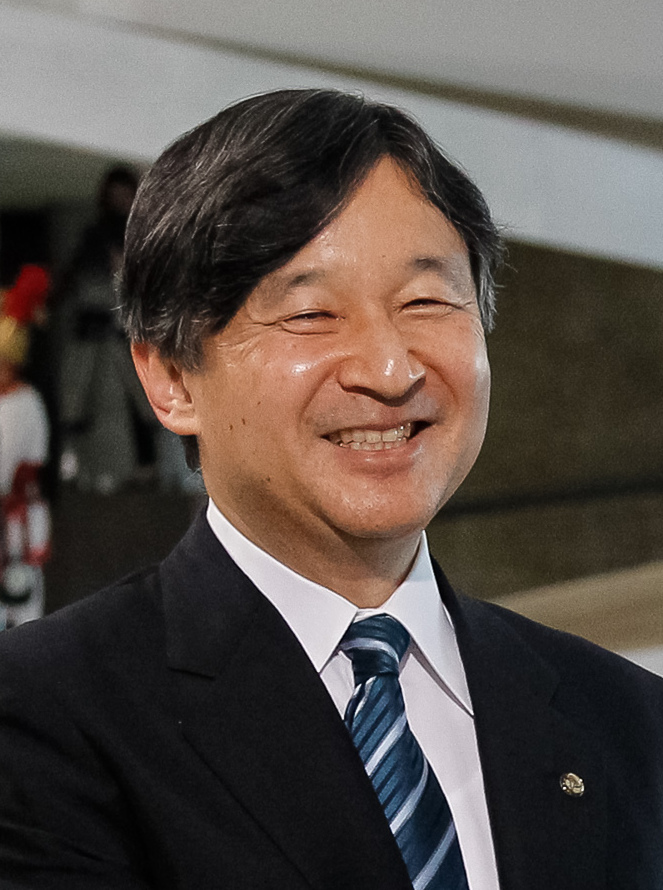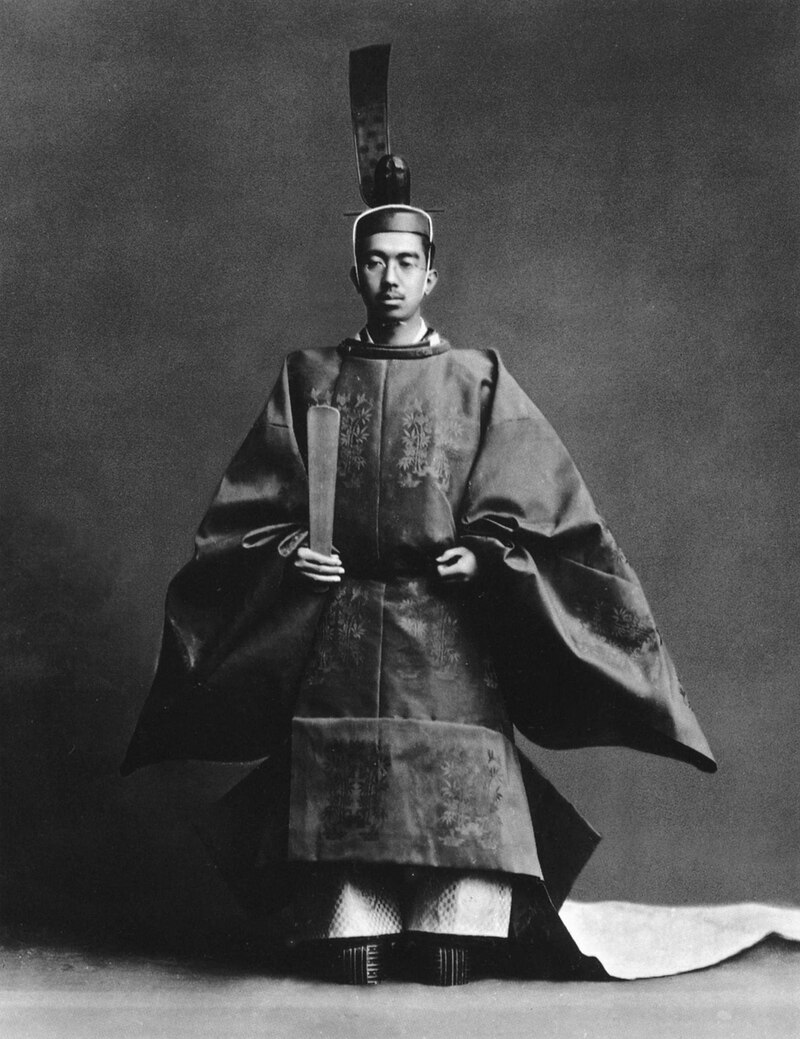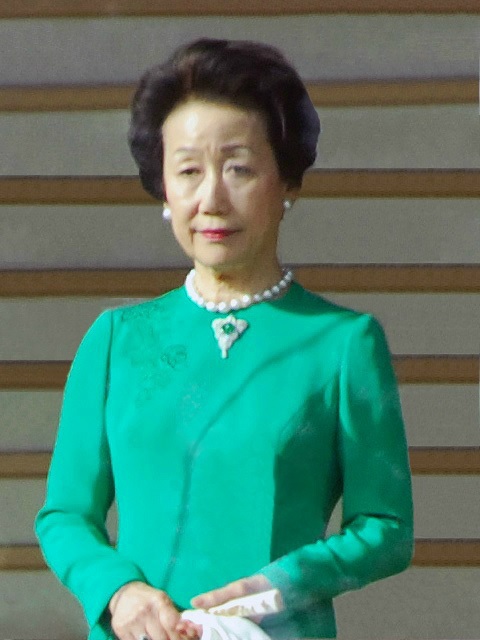by Susan Flantzer © Unofficial Royalty 2019

Pedro I, Emperor of Brazil/Pedro IV, King of Portugal: Credit – Wikipedia
Pedro I, Emperor of Brazil/Pedro IV, King of Portugal was born on October 12, 1798, at the Royal Palace of Queluz in Lisbon, Portugal. Named in honor of St. Peter of Alcantara, his full name was Pedro de Alcantara Francisco António João Carlos Paula Xavier Miguel Rafael Joaquim José Gonzaga Pascoal Cipriano Serafim. Pedro was the fourth of the nine children and the second but the eldest surviving son of King João VI of Portugal and Infanta Carlota Joaquina of Spain. He became the heir apparent to the throne upon the death of his six-year-old elder brother Francisco António in 1801.
Pedro had eight siblings:
- Infanta Maria Teresa (1793 – 1874), married (1) Pedro Carlos, Infante of Spain and Portugal, had one son (2) Carlos, Infante of Spain, widower of her sister Maria Francisca, no children
- Francisco António, Prince of Beira (1795 – 1801), died at the age of 6
- Infanta Maria Isabel (1797 – 1818), married Ferdinand VII, King of Spain (the second of his four wives), no surviving children, she died in childbirth as did her only child
- Infanta Maria Francisca (1800 – 1834), married her uncle Carlos, Infante of Spain, had three sons
- Infanta Isabel Maria, Regent of Portugal 1826 – 1828, (1801 – 1876), unmarried
- Miguel I, King of Portugal (1802 – 1866), married Adelaide of Löwenstein-Wertheim-Rosenberg after he was deposed, had seven children including Infanta Maria Ana who married Grand Duke Guillaume IV of Luxembourg
- Infanta Maria da Assunção (1805 – 1834), unmarried
- Infanta Ana de Jesus Maria (1806 – 1857), married Nuno José Severo de Mendoça Rolim de Moura Barreto, 1st Duke of Loulé, had five children
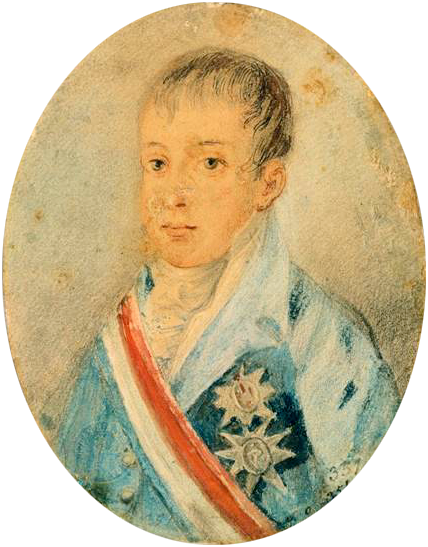
Pedro around age 11; Credit – Wikipedia
In 1807, when Pedro was nine years old, the Portuguese royal family moved to Brazil to escape the Napoleonic invasion and then remained in Brazil where Rio de Janeiro became the de facto capital of the Portuguese Empire. At that time, Brazil was ruled as a kingdom united with Portugal. Pedro was instructed in mathematics, political economy, logic, history, and geography. He was fluent in Portuguese, Latin, and French, could translate from English, and understood German. As an adult, Pedro would devote at least two hours each day to studying and reading.
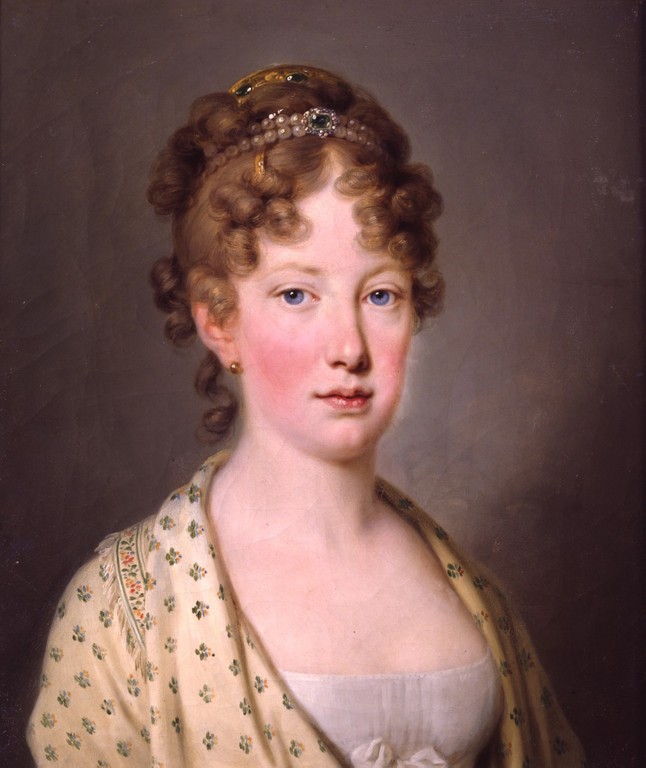
Archduchess Maria Leopoldina of Austria; Credit – Wikipedia
In 1816, negotiations began for a marriage between 18-year-old Pedro, Crown Prince of Portugal and Prince of Brazil, and 19-year-old Archduchess Maria Leopoldina of Austria. Known as Leopoldina, she was fifth of the twelve children and the fourth of the eight daughters of Emperor Franz I of Austria and the second of his four wives, Maria Theresa of Naples and Sicily. Leopoldina and Pedro were married by proxy at the Augustinian Church in Vienna, Austria on May 13, 1817, with Leopoldina’s uncle, Archduke Karl, Duke of Teschen standing in for the groom. The bride left Vienna on June 3, 1817, and arrived in Livorno, Tuscany (now in Italy) on July 24, 1817, where she was to embark on a three-month voyage to Rio de Janeiro, Brazil. On November 6, 1817, Leopoldina and Pedro were married in person in the chapel of the Paço de São Cristóvão (Saint Christopher’s Palace) in Rio de Janeiro where the couple lived after their marriage. Leopoldina had to adjust to Brazil’s heat and humidity, tropical rainfall, and the ever-present insects.
Pedro and Leopoldina had seven children:
- Maria II, Queen of Portugal (1819 – 1853), married (1) Auguste de Beauharnais, 2nd Duke of Leuchtenberg, died a few months after the marriage (2) Prince Ferdinand of Saxe-Coburg and Gotha (first cousin of Queen Victoria of the United Kingdom and her husband Prince Albert, as well as King Leopold II of Belgium and Empress Carlota of Mexico), had seven sons and four daughters including King Pedro V of Portugal and King Luís I of Portugal
- Miguel, Prince of Beira (born and died 1820)
- João Carlos, Prince of Beira (1821 – 1822), died in infancy
- Princess Januária of Brazil, recognized as an Infanta of Portugal but was later excluded from the Portuguese line of succession after Brazil became independent (1822 – 1901), married Prince Luigi, Count of Aquila, son of Francesco I, King of the Two Sicilies, had three sons and one daughter
- Princess Paula of Brazil, born in Brazil after its independence and was excluded from the Portuguese line of succession (1823 – 1833), died at age 9 of meningitis
- Princess Francisca of Brazil, born in Brazil after its independence and was excluded from the Portuguese line of succession (1824 – 1898), married Prince François of Orléans, son of Louis Philippe I, King of the French, had two daughters and one son
- Pedro II, Emperor of Brazil, born in Brazil after its independence and was excluded from the Portuguese line of succession (1825 – 1891), married Princess Teresa Cristina of the Two Sicilies, daughter of Francesco I, King of the Two Sicilies, had two sons and two daughters

Leopoldina with some of her children; Credit – Wikipedia
In 1821, after a series of revolutions and army mutinies, Pedro’s father King João VI, under pressure from the Portuguese parliament, departed Brazil for Portugal, leaving behind Pedro as Regent. Pedro discussed all government affairs with his wife Leopoldina and usually followed her advice. In January 1822, Pedro initiated an autonomous government for Brazil, a decisive step in the history of Brazil, which was definitely due to the influence of Leopoldina. This was done because it was known that Portugal intended to recall Pedro and relegate Brazil to the status of a colony.
In August 1822, Pedro appointed Leopoldina Regent while he went on a political trip to the Province of São Paulo. While Pedro was away, Leopoldina received news that Portugal was about to take action, and without waiting for Pedro’s return, met with the Council of State on September 2, 1822, and signed the Decree of Independence, declaring Brazil independent from Portugal. Pedro I was declared Emperor of Brazil on October 12, 1822, his 24th birthday, and Leopoldina became Empress of Brazil. Pedro’s coronation was held on December 1, 1822, in what is today known as the Old Cathedral of Rio de Janeiro.

The coronation ceremony of Emperor Pedro I; Credit – Wikipedia
When Pedro’s father King João VI of Portugal died in March 1826, it caused a succession crisis. Pedro was his eldest living son and heir but he had declared Brazil’s independence and was ruling as Emperor Pedro I of Brazil. King João VI had appointed his daughter Isabel Maria to serve as regent until the “legitimate heir returned to the Kingdom” but he never specified who that should be. Pedro was ruling as Emperor of Brazil and King João VI’s younger son Miguel (the future King Miguel I of Portugal) had been exiled to Austria after leading several revolutions against his father and his liberal regime. While Pedro was the legitimate heir, the Brazilian people did not want the two thrones to be reunited. Pedro reigned as King of Portugal for only two months and then abdicated the Portuguese throne on May 2, 1826, in favor of his seven-year-old daughter Queen Maria II.

Domitila de Castro, Marchioness of Santos; Credit – Wikipedia
In 1822, Pedro began an affair with Brazilian noblewoman Domitila de Castro, Marchioness of Santos. He had mistresses during his marriage to Leopoldina but was always careful to conceal his affairs. This time, Pedro flaunted the affair. He was increasingly rude and disrespectful to Leopoldina, left her short of money, prohibited her from leaving the palace, and forced her to endure his mistress Domitila as her lady-in-waiting. In November 1826, while Leopoldina was pregnant with her eighth child (she had given birth to seven children in six years), Pedro arranged a farewell reception before he left for a military trip. He demanded that his wife and his mistress attend the reception along with government, diplomatic, and church officials. Leopoldina refused to attend, causing a bitter argument with Pedro which remained unresolved when he left on his trip. Shortly thereafter, 29-year-old Leopoldina died at the Palacio de São Cristovão on December 11, 1826, from puerperal fever (childbed fever) after a miscarriage.
After Leopoldina’s death, Pedro had remorse for how he had treated her and decided to become a better person. In 1828, Pedro insisted that his mistress Domitila de Castro, Marchioness of Santos leave Rio de Janeiro. However, after several European princesses refused his marriage proposals because of his bad reputation, Pedro allowed his mistress Domitila to return to court. It was not until after negotiations for a second marriage were successfully concluded that Domitila permanently left the court.
Amélie of Leuchtenberg; Credit – Wikipedia
Pedro’s second wife was 17-year-old Princess Amélie of Leuchtenberg, daughter of Eugène de Beauharnais Duke of Leuchtenberg, the only son of Napoleon’s first wife Empress Josephine and her first husband Alexandre, Vicomte de Beauharnais, and Princess Augusta of Bavaria, daughter of King Maximilian I of Bavaria. A proxy marriage was held in the chapel of the Palais Leuchtenberg in Munich, Bavaria on August 2, 1829. Amélie arrived in Rio de Janeiro on October 15, 1829. Two days later, Pedro and Amélie were married in person at the Old Cathedral of Rio de Janeiro. They had a happy marriage and Amélie’s relationship with her stepchildren was very positive.

The wedding of Pedro and Amélie, next to Pedro are his children from his first marriage: Pedro, Januária, Paula and Francisca; Credit – Wikipedia
Amélie and Pedro had one daughter:
- Princess Maria Amélia of Brazil (1831 – 1853), engaged to Archduke Maximilian of Austria (the ill-fated future Emperor of Mexico) but died at age 21 from tuberculosis before the wedding

Amélie and her daughter Maria Amélia in 1840; Credit – Wikipedia
On April 7, 1831, after a political crisis that ended with the resignation of his ministers and in the middle of an economic crisis, Pedro abdicated the throne of Brazil in favor of his six-year-old son who reigned as Emperor Pedro II of Brazil. Pedro and his pregnant wife Amélie left for Europe. In Portugal, Pedro’s brother Miguel served as Regent for Pedro’s daughter Queen Maria II. Maria had been sent to Vienna to continue her education. It was on this journey that Maria learned that her uncle Miguel had deposed her and declared himself King on June 23, 1828. At that time Emperor Pedro insisted that his daughter was the rightful Queen, and demanded that she be treated as such. She traveled to the United Kingdom, hoping to garner the British government’s support, but they instead supported Miguel. Maria met up with her father in France, where they stayed with King Louis Philippe I, and Maria received her education. For several years, forces loyal to Maria and her father would try to force Miguel from the throne. Finally, on May 26, 1834, Miguel was forced to abdicate, and Maria was returned to the Portuguese throne.

Pedro on his deathbed; Credit – Wikipedia
On September 24, 1834, at the age of 35, Pedro died from tuberculosis at his birthplace, the Royal Palace of Queluz in Lisbon, Portugal. He was first buried at the Pantheon of the House of Braganza at the Monastery of São Vicente de Fora in Lisbon, Portugal. In 1972, Pedro’s remains were transferred to the Brazilian Imperial Crypt and Chapel under the Monument of the Ipiranga (Monument to the Independence of Brazil) in São Paulo, Brazil.

Pedro’s tomb in Braqzil; Credit – Wikipedia
This article is the intellectual property of Unofficial Royalty and is NOT TO BE COPIED, EDITED, OR POSTED IN ANY FORM ON ANOTHER WEBSITE under any circumstances. It is permissible to use a link that directs to Unofficial Royalty.
Portugal Resources at Unofficial Royalty
Works Cited
- En.wikipedia.org. (2018). Pedro I of Brazil. [online] Available at: https://en.wikipedia.org/wiki/Pedro_I_of_Brazil [Accessed 19 Oct. 2018].
- Es.wikipedia.org. (2018). Pedro I de Brasil y IV de Portugal. [online] Available at: https://es.wikipedia.org/wiki/Pedro_I_de_Brasil_y_IV_de_Portugal [Accessed 19 Oct. 2018].
- En.wikipedia.org. (2018). Pedro I of Brazil. [online] Available at: https://en.wikipedia.org/wiki/Pedro_I_of_Brazil [Accessed 19 Oct. 2018].













